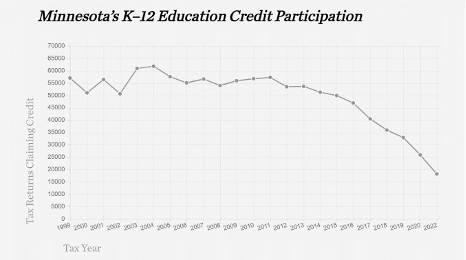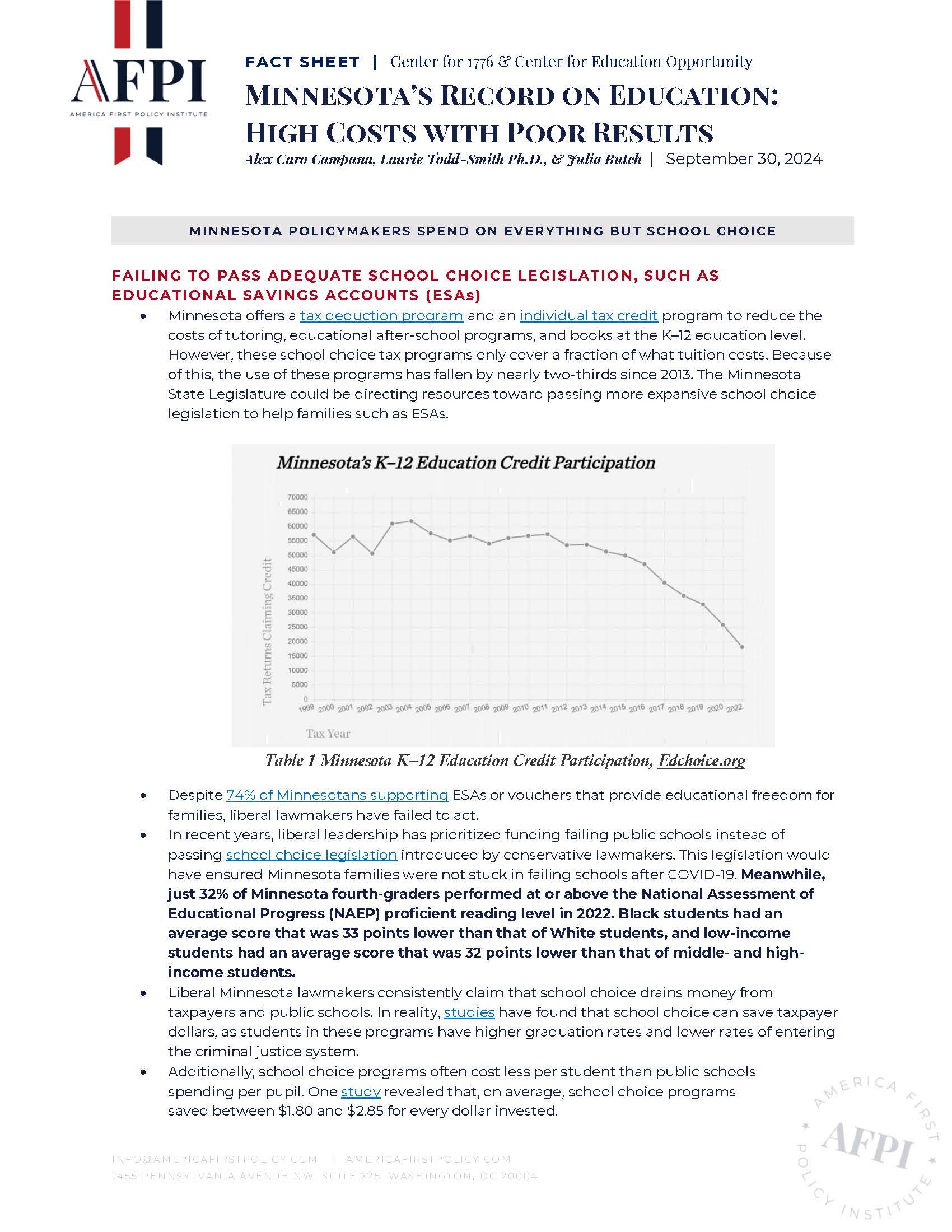Minnesota’s Record on Education: High Costs with Poor Results
MINNESOTA POLICYMAKERS SPEND ON EVERYTHING BUT SCHOOL CHOICE
FAILING TO PASS ADEQUATE SCHOOL CHOICE LEGISLATION, SUCH AS EDUCATIONAL SAVINGS ACCOUNTS (ESAS)
- Minnesota offers a tax deduction program and an individual tax credit program to reduce the costs of tutoring, educational after-school programs, and books at the K–12 education level. However, these school choice tax programs only cover a fraction of what tuition costs. Because of this, the use of these programs has fallen by nearly two-thirds since 2013. The Minnesota State Legislature could be directing resources toward passing more expansive school choice legislation to help families such as ESAs.

- Despite 74% of Minnesotans supporting ESAs or vouchers that provide educational freedom for families, liberal lawmakers have failed to act.
- In recent years, liberal leadership has prioritized funding failing public schools instead of passing school choice legislation introduced by conservative lawmakers. This legislation would have ensured Minnesota families were not stuck in failing schools after COVID-19. Meanwhile, just 32% of Minnesota fourth-graders performed at or above the National Assessment of Educational Progress (NAEP) proficient reading level in 2022. Black students had an average score that was 33 points lower than that of White students, and low-income students had an average score that was 32 points lower than that of middle- and high-income students.
- Liberal Minnesota lawmakers consistently claim that school choice drains money from taxpayers and public schools. In reality, studies have found that school choice can save taxpayer dollars, as students in these programs have higher graduation rates and lower rates of entering the criminal justice system.
- Additionally, school choice programs often cost less per student than public schools spending per pupil. One study revealed that, on average, school choice programs saved between $1.80 and $2.85 for every dollar invested.
THROWING MONEY AT FAILING PUBLIC SCHOOLS & UNNECESSARY PROGRAMMING
- Despite approving $525 million in additional education spending in May 2021, public schools in the state have continued to decline. The percentage of eighth-grade students in Minnesota who performed at or above the NAEP proficient reading level dropped by seven percentage points between 2019 and 2022, going from 39% to 32%. Additionally, just 32% of eighth-graders performed at or above the proficient mathematics level in 2022, down 12 percentage points from 2019.
- Meanwhile, in 2024, Gov. Tim Walz (D-MN) signed legislation that requires school districts to develop plans to ensure all students—boys and girls—can access free tampons and pads. This will cost $2.00 per pupil, and the total cost of the legislation will be $400 million over two years.
- Minnesota’s higher education budget also establishes a “free” college tuition program for students whose families make less than $80,000 annually. Minnesota will spend about $117 million in fiscal year 2025 to start the program and then $49.5 million annually thereafter. Gov. Walz is willing to spend money on free college but will not invest in school choice to provide better options for K–12 students who can’t read.
- Simply increasing funding does not guarantee an improvement in student outcomes. However, research shows that school choice policies result in enhanced academic performance. A 2021 study found that offering parents more school options improved academic outcomes for students at public and private schools.
